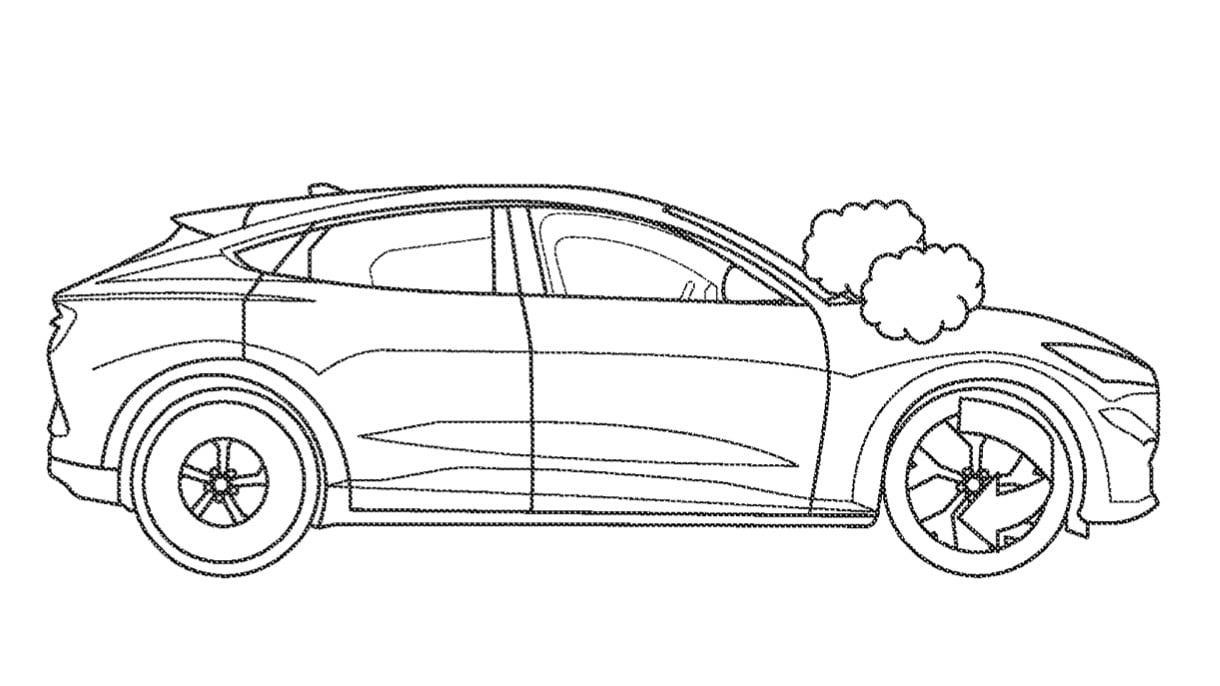Ford has filed a patent application for a burnout method for electric cars that would allow electric cars to smoke the front tires, the rear tires, or all four.
He noticed it for the first time CarBuzzthe United States Patent and Trademark Office (USPTO) published Ford’s application for an “electric vehicle performance mode with intentional wheel spin for tire heating” on March 2, after it was originally filed on August 30, 2021.
In the application, Ford discusses braking one axle while applying power to another axle to spin the tires to “spin out and heat or smoke the tire to improve traction and visually display power.” In other words, burnout.
Using the brakes to hold the car in place while spinning the wheels sounds similar to line lock function previously seen a Ford Mustang, but applies to all-wheel drive electric vehicles whose engines drive both axles. This means that burnout mode can be used with either the front or rear wheels. In the accompanying sketches, clouds of smoke roll down from each set of wheels. The car depicted is a Ford Mustang Mach-Ebut that doesn’t mean this feature is intended for that model, as Ford hasn’t confirmed the burnout mode for production.

The app also mentions “a sequential maneuver that spins the tires on the first axle, then the tires on the second axle,” potentially allowing for four-wheel burnout. This would be activated by “specified manipulation of the brake pedal and accelerator pedal,” according to the application.
Ford tried to show the potential of electric vehicles with the Mustang Mach-E 1400, which spins all four tires with ease thanks to seven engines with 1400 horsepower. It’s unlikely that such a powertrain will end up in a road car, but this burnout method is a much more plausible way to increase the fun factor for EV buyers.
This article was originally published by Motor Authorityeditorial partner ClassicCars.com.

















